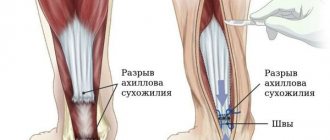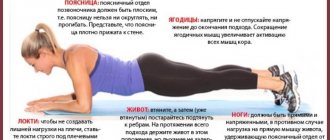Cardio
Cardio, or aerobic training, is low- and moderate-intensity physical exercise that uses the maximum number of muscles and consumes a large amount of oxygen. The same O2 in this case acts as the predominant energy source. At the same time, the blood is actively saturated with oxygen and intensively delivers it to the cells. Biochemically, movements occur due to the oxidation of glucose with oxygen. At the same time, the processes of catabolism - metabolic breakdown - are launched and accelerated, which is important when there is an excess of adipose tissue.
Proper cardio
The nature of performing correct cardio exercises is rhythmic, dynamic, continuous and long, at least 5 minutes each. The interval between exercises is minimal - no longer than 1 minute. The exercise time sufficient to burn fat is more than 40 minutes.
Normally, cardio training is accompanied by an increase in heart rate, increased breathing, and increased sweating. The pulse rises and stays for a certain time. Working values at which exercises are effective: 70-80%*maximum heart rate MHR. MHR for men is 220-age, for women – 226-age.
The benefits of cardio training performed according to the listed rules:
- strengthen the heart muscle;
- speed up metabolism, burn calories, help lose weight by reducing fat;
- increase lung volume and strength;
- increase vitality;
- promote the production of anti-stress hormones;
- increase overall endurance;
- improve sleep quality.
Examples of cardio training are walking, running, swimming, cycling, sports activities, and sports dancing.
Interval Cardio Program
Below you will see programs for cardio training in interval mode of two difficulty levels: level 1 and level 2. The second program is more difficult because it has rest periods that are half as long as periods of intense work. These programs are suitable for any type of cardio exercise: running, jumping rope, cycling, etc. All interval training begins with a warm-up and ends with a cool-down. Before you start, you need to do basic joint exercises - these are prerequisites that cannot be neglected.
The interval times indicated in the program are approximate, you can vary it depending on your level of training, increasing or decreasing the intervals of rest and intensive work. The main thing is to “get” into the desired heart rate zones. Therefore, if during the specified rest time, your heart rate did not have time to drop to the desired level, increase the rest time.
I also want to draw your attention to the fact that before interval cardio training you should not drink any fat burners (with the possible exception of L-carnitine) or energy drinks, including coffee. This will further increase the stress on the heart and may make the workout unsafe.
Level 1
| Kind of activity | Heart rate | Time |
| Warm-up | 50-60% of maximum heart rate | 5 minutes |
| Intensive work | 80-90% of maximum heart rate | 1 minute |
| Rest | 50-60% of maximum heart rate | 1 minute |
| Intensive work | 80-90% of maximum heart rate | 1 minute |
| Rest | 50-60% of maximum heart rate | 1 minute |
| Intensive work | 80-90% of maximum heart rate | 1 minute |
| Rest | 50-60% of maximum heart rate | 1 minute |
| Intensive work | 80-90% of maximum heart rate | 1 minute |
| Rest | 50-60% of maximum heart rate | 1 minute |
| Intensive work | 80-90% of maximum heart rate | 1 minute |
| Rest | 50-60% of maximum heart rate | 1 minute |
| Intensive work | 80-90% of maximum heart rate | 1 minute |
| Rest | 50-60% of maximum heart rate | 1 minute |
| Intensive work | 80-90% of maximum heart rate | 1 minute |
| Rest | 50-60% of maximum heart rate | 1 minute |
| Intensive work | 80-90% of maximum heart rate | 1 minute |
| Hitch | 50-60% of maximum heart rate | 5 minutes |
| Training time | 25 minutes |
Level 2
| Kind of activity | Heart rate | Time |
| Warm-up | 50-60% of maximum heart rate | 5 minutes |
| Intensive work | 80-90% of maximum heart rate | 2 minutes |
| Rest | 60-70% of maximum heart rate | 1 minute |
| Intensive work | 80-90% of maximum heart rate | 2 minutes |
| Rest | 60-70% of maximum heart rate | 1 minute |
| Intensive work | 80-90% of maximum heart rate | 2 minutes |
| Rest | 60-70% of maximum heart rate | 1 minute |
| Intensive work | 80-90% of maximum heart rate | 2 minutes |
| Rest | 60-70% of maximum heart rate | 1 minute |
| Intensive work | 80-90% of maximum heart rate | 2 minutes |
| Rest | 60-70% of maximum heart rate | 1 minute |
| Intensive work | 80-90% of maximum heart rate | 2 minutes |
| Rest | 60-70% of maximum heart rate | 1 minute |
| Intensive work | 80-90% of maximum heart rate | 2 minutes |
| Hitch | 60-70% of maximum heart rate | 5 minutes |
| Training time | 30 minutes |
And to receive more useful information every day, subscribe to our Instagram.
#fat burning#cardio#weight loss
Power
Strength training is a type of high-intensity physical activity in which exercises are performed with weights: dumbbells, kettlebells, barbells, expanders and other sports equipment. Anaerobic exercise differs from aerobic exercise in the source of energy: the body uses substances contained in the muscles – ATP and CP – as “fuel”.
The movements occur due to the oxidation of glucose in the absence of oxygen. The duration of strength exercises is less than 5 minutes. Between approaches, breaks are necessary to allow for recovery. After each set, they are gradually increased so that the efficiency of performing movements does not decrease.
During the strength training itself, not many calories are burned, while the increased energy expenditure continues throughout the day. Subject to a balanced diet, alternating short intense loads and sufficient rest between approaches, strength training stimulates anabolic processes - the synthesis of new muscle cells and tissues.
Benefits of strength training:
- high energy consumption in a short period of time;
- the ability to not only burn fat, but also build muscle mass;
- the ability to increase muscle volume without increasing fat tissue;
- increasing explosive strength and muscle endurance.
Examples of anaerobic strength exercises are weight lifting 10-15 repetitions, sprinting, bodybuilding, powerlifting.
Conclusion
Cardio training helps you lose weight and get rid of body fat, while strength training helps you increase muscle mass. If you want to maintain good physical shape, then both training sessions must be combined. They can be combined within one workout or alternate cardio with strength training throughout the week.
Combine cardio and strength training
← Back to list of articles
What is better to choose when playing sports - cardio or strength training? Why choose one thing when both types of training can be combined! How does it work? Come to “MyFitness” and we will tell you our secret of what to take from each type of training and in what volume to be in excellent physical shape! Well, in the meantime, if you haven’t suddenly come to our club for practice, which is very in vain, we’ll tell you about the theoretical component of the issue. This is also interesting and educational.
First, let's give the correct definitions of what is called cardio and what is strength training. There are a lot of opportunities to get cardio exercise: running, an inertial exercise bike, jumping rope - these are the main things you need to choose in the gym. What are the benefits of cardio training? Of course, fat burning efficiency! Strength training is an activity with additional weights.
Lifting weights forces the body to expend energy at an increased rate, which means it burns calories.
When our body needs to work as hard as possible, cope with good loads, endure strength work or run a lot/fast, the body uses glycogen - these are carbohydrates that our body stores for future use. As soon as glycogen stores run out during training, the body will use subcutaneous fat to start the recovery process, and calories will be spent on the process of muscle growth. Therefore, if you want to achieve results in the gym, and you want this, you don’t need to make a choice: “which is better” - cardio or strength training, because each of these types of training perfectly burns fat deposits. It is quite logical that in order to maximize the effect, you need to learn to combine these two types of work in the gym, to combine them.
Olga Fedotova, trainer of the MyFitness Club:
“Of course you need to combine cardio and strength training! Cardio training really helps you lose weight and get rid of some fat deposits, strength training will help you increase muscle mass. If you strive to maintain good physical shape, and this is a normal desire for all visitors to fitness clubs, including MyFitness, then both of these trainings must be combined. How to combine depends on the person’s goals and body type. But don’t worry, we will help you sort out all these issues!”
Well, we have decided that both strength training and cardio are equally useful and necessary. But what should you do first when starting a workout? If you haven’t exercised for a long time and work in an office, then, of course, it will be easier to start the day in the gym with cardio. If you lead an active and mobile lifestyle, your work involves physical activity, it is logical that you can place more emphasis on strength exercises. Aerobic work is usually done electively and can be done either before or after the strength portion of the workout. Cardio will be an excellent warm-up, it will allow you to warm up your body, and your body will be ready to receive further stress. But the main thing here is not to overdo it with running or pedaling. You can become so exhausted during the aerobic part that you simply get tired before the strength part. This won't suit us! At MyFitness we will teach you how to properly plan and conduct a workout so that everything is done in moderation.
What else do you need to know when combining cardio with strength training? In addition to glycogen, muscle fat will be consumed during prolonged cardio. And if you overdo it here, the muscles will be the next to be affected, and this can lead to a decrease in muscle mass.
Take 60 minutes as an average - this is the period of time that will be more than enough for you to do full-fledged cardio. For a warm-up, 5-7 minutes is enough - in this mode, you won’t spoil the task of gaining muscle mass. If you don’t have such a goal, then when to do cardio—before or after strength training—doesn’t really matter.
Cardio after strength training is the best option by default. You will approach weight training with the maximum strength with which you came to the gym. Having plowed with iron, you can move on to aerobic work, the duration of which you will already determine yourself, according to the residual principle. 30-40 minutes of cardio will be enough for you, no doubt. In this case, moderate cardio exercise will not interfere with the growth of muscle mass. In this mode, you can build your every training day into a training schedule. The most common approach in this case is to train on Monday, Wednesday and Friday.
Another option for combining cardio and strength training is to split your workouts into days, alternating them one after the other. This approach involves 6 training days a week, with a day off on Sunday. In terms of recovery, the body should accept such a schedule better, but for this you also need to have free time for the specified training plan. If it works out, then the body will certainly recover even faster, and the muscles will grow as much as possible.
Olga Fedotova, trainer of the MyFitness Club:
“Which is better - cardio or strength training? This question in itself is strange. We simply need both of these in the training process. Cardio strengthens the heart muscle, speeds up metabolism, burns calories - thanks to this, weight will go away, the number of fat cells will decrease, lung strength will increase, and your vitality will simply increase! Strength training will help you not only burn fat, but also build muscle mass and then muscle size without increasing fat tissue.”
At MyFitness, we will help you choose the most optimal cardio and strength training option based on your goals. Don’t forget: you come to the gym not for someone else, but for yourself and your health!
Why do you need cardio after strength training?
It is generally accepted that during anaerobic training you will exhaust all glycogen, so adipose tissue will “burn” during aerobic training. At the same time, a number of experts doubt whether cardio should always be done after strength training.
They believe that if a person has strength left, for example, for a 40-minute run after a “rocking exercise,” then he did not work out and did not exercise effectively. In their opinion, this regime of combining strength and cardio loads in one workout is suitable only for experienced and endurance athletes.
Cardio before strength training
- Cardio before strength training is not recommended for those whose goal is to lift more weight. This is due to the fact that cardio training requires a lot of energy, which later you may not have enough when working with iron. To confirm this, studies were conducted in which it was proven that of two groups of people with the same physical fitness and strength indicators, those who did not do cardio before were able to gain more weight.
- It is recommended to do cardio before strength training for those who are currently training with light to medium weights in a high-repetition style. Read more about training for relief while cutting →
In general, pre-workout cardio in many cases is used not so much to burn subcutaneous fat, but to warm up and prepare muscles for the load.
Power, energy consumption and energy consumption
For both weight loss and muscle growth, it is important to eat right. To reduce body size, it is necessary that the number of calories expended per day be greater than those consumed. At the same time, a competent balance of proteins, fats and carbohydrates (BJU) is important - 1:1:4. It is recommended to exercise no earlier than 2 hours after a meal - lean protein with vegetables - or in the morning on an empty stomach.
When working on muscle mass, there are fewer dietary restrictions. The diet should contain more protein than during the weight loss period. To gain muscle mass per 1 kg of weight, you need to consume at least 2 g of protein, 4-6 g of carbohydrates and 1 g of fat. Additional intake of protein shakes is optimal. They can be replaced with cottage cheese-kefir smoothies with honey and fruit.
Conclusion
Strength and cardio exercises are combined in different ways in practice. Moreover, each option has its own theoretical justification, supported by practical results. It all depends on the initial data, lifestyle, training regimen and individual characteristics of the body. Thus, from the proposed options, you can choose the most suitable one for yourself. Achieving sports goals is impossible without proper nutrition.
Rate this article:
Rating 3.92 [59 votes]











